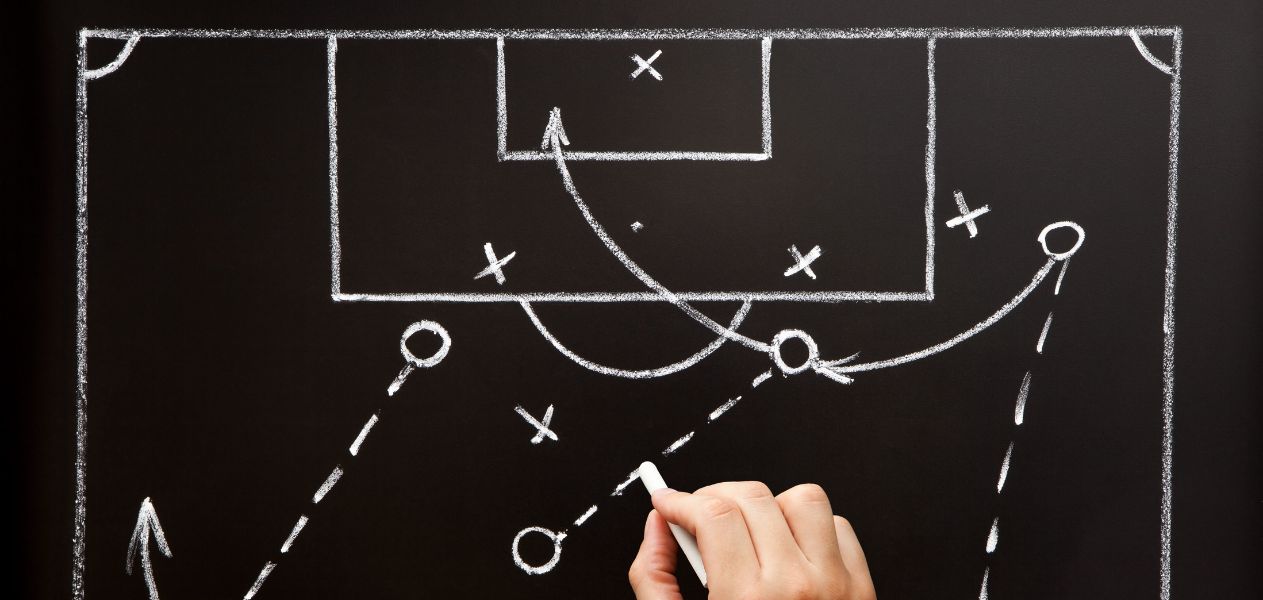Football is a game that requires skill, athleticism, and strategy. The latter is particularly important as it is the foundation upon which winning teams are built. Football tactics refer to the plans and strategies that coaches devise to help their team win matches. In this article, we will look at the art of football tactics, exploring how coaches plan their strategies to achieve success on the pitch. If this is not your topic, maybe you should visit this website link.
Defining Tactics in Football
Tactics in football are essentially the plans and strategies that teams use to achieve specific objectives during a game. These objectives might include scoring goals, defending their own goal, controlling possession of the ball, and disrupting the opposition’s play. Tactics can be broadly categorized into two main types: offensive and defensive.
Offensive tactics are strategies that teams use to score goals and create scoring opportunities. These might include high-pressing, attacking down the wings, or playing long balls to a tall striker. Defensive tactics, on the other hand, are strategies that teams use to stop the opposition from scoring. These might include parking the bus, playing a high defensive line, or pressing aggressively in the opposition’s half of the pitch.
Planning Football Tactics
Planning football tactics is a complex process that requires coaches to consider a wide range of factors. Coaches need to assess their own team’s strengths and weaknesses as well as those of the opposition. They need to think about the playing style of the opposition, the conditions of the pitch, and the fitness levels of their own players. All of these factors will influence the tactics that a coach chooses to employ during a game.
One of the first steps in planning tactics is to analyze the opposition. Coaches will study the opposition’s previous matches, looking for patterns in their play and identifying key players. They will also assess the opposition’s strengths and weaknesses, looking for areas where they might be vulnerable. This analysis will inform the coach’s decisions about which tactics to use during the game.
The next step is to consider the coach’s own team. Coaches will assess their own team’s playing style, strengths, and weaknesses. They will think about which players are available and which ones are likely to perform well in a particular game. This analysis will help the coach to choose the most appropriate tactics to employ.
Once a coach has a good understanding of the opposition and their own team, they can start to plan their tactics. They will need to decide on a formation, which refers to the way that players are arranged on the pitch. Formations can vary depending on the tactics that a coach wants to use. For example, a coach might choose a 4-4-2 formation if they want to play with two strikers, or a 3-5-2 formation if they want to have more midfield control.
After choosing a formation, the coach will then need to decide on the specific tactics to use. This might involve deciding on a pressing strategy, determining how to control possession of the ball, or choosing a particular style of play. For example, a coach might choose to employ a high-pressing strategy if they want to disrupt the opposition’s play and create scoring opportunities.
Implementing Football Tactics
Once a coach has planned their tactics, the next step is to implement them during the game. This is where the coach’s leadership skills come into play. The coach will need to communicate their tactics clearly to the players and ensure that everyone understands their roles and responsibilities. They will need to motivate the players and make adjustments to their tactics if necessary.
During the game, the coach will need to observe the opposition and their own team closely. They will need to make decisions about when to make substitutions, when to change tactics, and when to make other strategic decisions. These decisions can have a significant impact on the outcome of the game, so it is important for the coach to remain focused and alert throughout.
One of the most important aspects of implementing football tactics is player communication. Coaches need to ensure that their players understand their roles and responsibilities within the team’s tactics. This might involve providing specific instructions to individual players or using hand signals and other non-verbal cues to communicate during the game.
Another important aspect of implementing football tactics is making adjustments. Coaches need to be prepared to make changes to their tactics if they are not working effectively. For example, if a team is struggling to create scoring opportunities, a coach might switch to a more attacking formation or instruct their players to take more risks with their passing. Making effective adjustments can be the difference between winning and losing a game.
The Role of Technology in Football Tactics
Technology has had a significant impact on the way that football tactics are planned and implemented. Coaches can now use a wide range of tools to analyze data and make more informed decisions about their tactics. For example, video analysis software can be used to analyze footage of previous matches, helping coaches to identify patterns in the opposition’s play and make better tactical decisions.
Other technological tools that coaches can use include GPS tracking devices, which can be used to monitor the fitness levels of players and adjust training regimes accordingly. Tactical analysis software can also be used to create 3D models of the pitch, allowing coaches to experiment with different formations and strategies.
The use of technology in football tactics has been controversial at times. Some argue that it takes away from the artistry and creativity of the game, reducing it to a purely analytical exercise. However, others argue that technology can help coaches to make better decisions and create more effective tactics.
In conclusion, football tactics are a crucial aspect of the sport, and the success of a team often depends on how well their tactics are planned and implemented. The art of football tactics requires a balance between analytical thinking and creativity, as coaches seek to find the most effective strategies for their team while also allowing for individual flair and improvisation on the pitch.






Leave a Reply